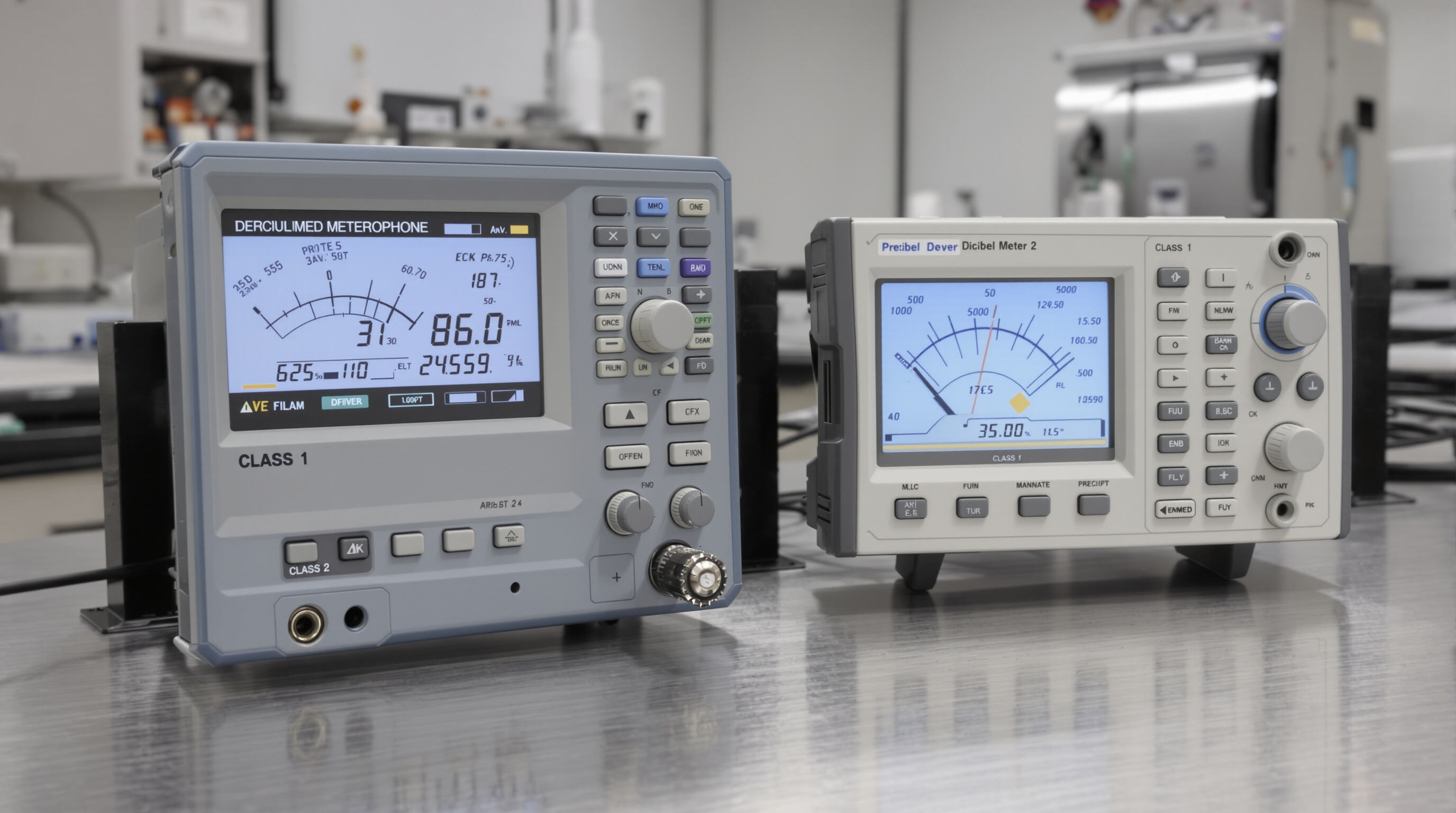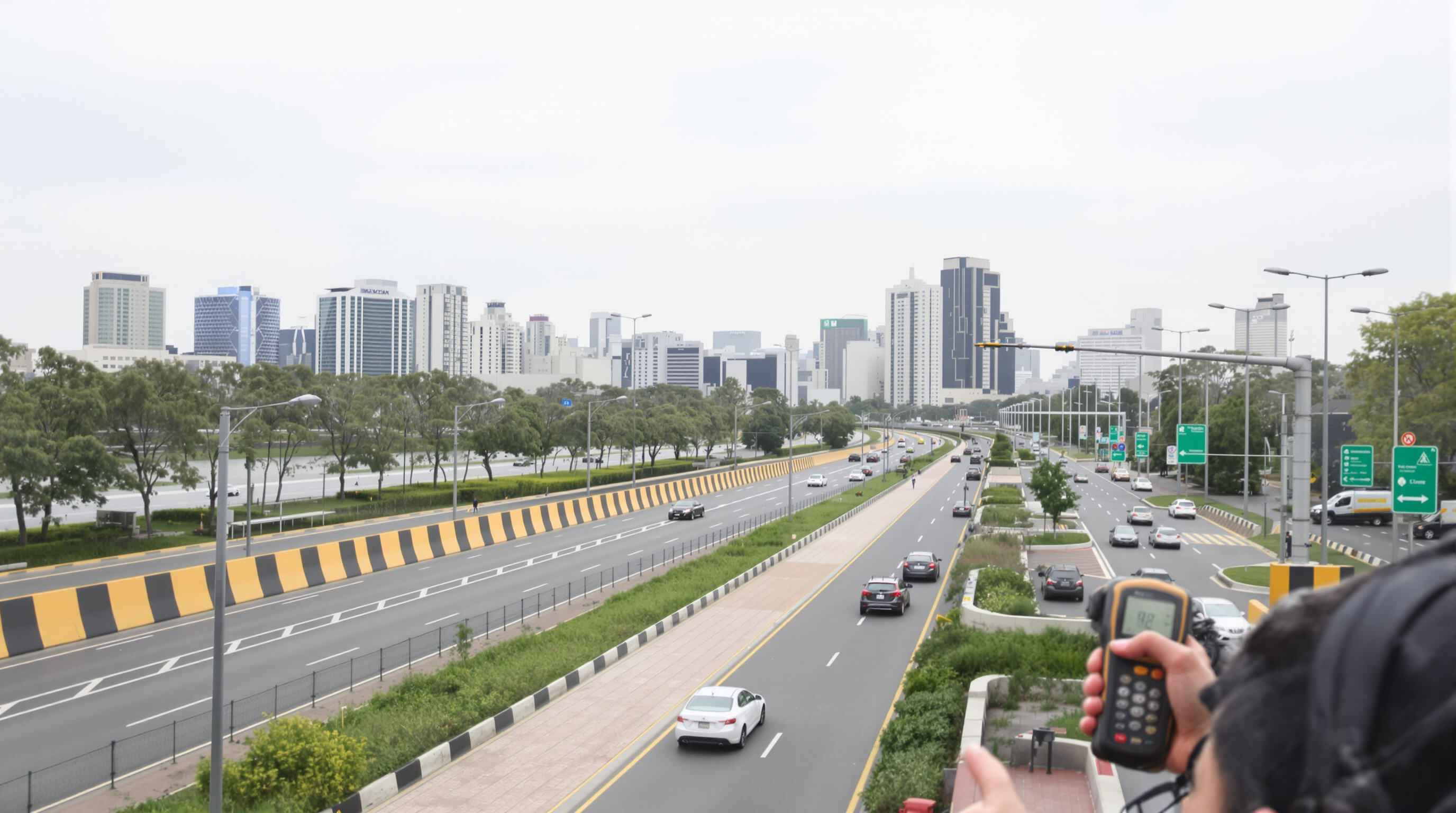Environmental noise basically means those annoying sounds we hear outside from things like cars on the road, construction sites nearby, and factories running their machines. Spending too much time in areas where noise levels go over 55 decibels A-weighted (which is similar to what people experience during a normal day in city neighborhoods) can actually mess with our health. People exposed to this kind of noise for long periods might suffer from trouble sleeping at night, higher blood pressure readings, and even heart problems according to research published by the World Health Organization back in 2021. Looking at the bigger picture, the WHO calculated that all this background noise costs Western Europe around 1.6 million healthy life years every single year. That's why proper tracking of noise pollution and finding ways to reduce it remains so important for communities everywhere.
Most smartphone apps come with error ranges around ±5 dB, which means they just won't cut it when legal proof is needed. That's where professional decibel meters shine. These devices handle temperature changes and background noise much better, so experts can tell the difference between normal night time sounds at about 35 dB and dangerous levels we see near busy roads at around 70 dB. Something interesting happens too: even though most folks don't notice a 3 dB jump in volume, it actually doubles the amount of sound energy hitting our ears. And those small increases add up over years, potentially causing long term health issues nobody wants.
The A-weighted decibel scale (dBA) takes into account how our ears don't pick up low frequency sounds very well, like the deep rumble from factory machines or construction equipment. Workplace safety regulations actually follow this standard too. The Occupational Safety and Health Administration sets a maximum exposure level of 85 dBA over an 8 hour workday according to their guidelines from 2023. Research published by NIOSH in 2022 found that using dBA measurements instead of regular decibel readings makes noise assessments much more accurate for things like road traffic or residential areas. These studies indicate improvements ranging from 12 to 15 dB in measurement precision, which means we get a better picture of what kind of hearing damage workers might face in real world conditions.
A good environmental noise meter should be able to pick up sounds ranging anywhere between 30 decibels, which is about as quiet as a library, all the way up to 130 decibels, similar to what you'd hear near a jet engine taking off. The average city environment tends to sit somewhere around 60 to 85 dB. Streets, parks, and those noisy construction sites typically fall within this range. Interestingly enough, this matches exactly with the World Health Organization's recommendation for when people should start thinking about hearing protection after being exposed to 85 dB levels for eight straight hours. If a device doesn't cover this full spectrum, it might miss those sudden loud noises that could actually be harmful or fail to properly measure background noise levels that are critical if someone wants to study noise pollution effects over months or even years.
People generally don't hear low frequencies as well as higher ones, which is why A-weighting (or dBA) matters so much in sound measurement. The scale basically focuses on frequencies between about 500 to 10,000 Hz while downplaying those lower tones we're not as sensitive to. Take traffic noise for example something measured at 80 dB might actually show up around 72 dBA when weighted properly. This kind of discrepancy really impacts how regulations are set and what counts as harmful exposure levels. Most places around the world have adopted these dBA standards too according to recent updates from international noise guidelines back in 2024, though specifics can vary by location.
Meters meeting IEC 61672-1 deliver ±1.4 dB accuracy, weather resistance, and calibrated frequency response. Consumer-grade devices often deviate by ±5 dB, rendering data unusable in legal or planning contexts. A 2023 study found 78% of municipalities reject non-compliant meters during zoning reviews, reinforcing the importance of certified equipment.

Class 1 sound level meters provide exceptional accuracy with a margin of error around ±1.4 dB, and they comply with rigorous international standards such as IEC 61672-1. These devices are typically used in laboratory conditions where precise readings matter most. The frequency range spans from 10 Hz all the way up to 20 kHz, which pretty much aligns with what our ears can actually perceive. When we look at Class 2 models instead, these instruments have a slightly wider tolerance window of about ±2 dB. They strike a good compromise between price point and ruggedness, making them suitable for outdoor testing scenarios. While both classes handle dBA measurements effectively, Class 1 meters stand out particularly well in situations where background noise levels are minimal. This advantage comes from better microphone technology and more stable calibration over time, factors that make all the difference when measuring very quiet sounds accurately.
Class 1 meters work best around sensitive locations such as hospitals, schools, and residential neighborhoods because even minor changes matter when assessing potential health impacts. These devices offer exceptional resolution that makes them essential for measuring sounds below 30 dB levels. The European Union actually mandated their use in 2023 for creating detailed traffic noise maps within protected ecological areas. What sets these meters apart is their ability to pick up fleeting noises that other equipment might miss entirely. Think about late night construction work or subtle animal movements during quiet hours something regular meters simply cannot capture effectively.
Class 2 meters work pretty good for everyday city noise levels ranging from about 60 to 90 decibels, which covers most traffic sounds, business areas, and crowd noises. According to a recent World Health Organization report from 2023, around eight out of ten sounds measured in cities fall right into this Class 2 range. Still worth noting though, these aren't the best choice when dealing with actual lawsuits or factory compliance tests since small measurement mistakes could really mess things up. What makes them handy for regular folks checking neighborhood noise levels or doing those park sound assessments is their long lasting batteries (over 40 hours) plus they tend to survive rough handling better than many alternatives on the market today.
Noise monitoring requires instruments resistant to harsh conditions. Choose IP54-rated or higher devices that resist dust and water splashes—essential during unexpected rain. Rubberized casings and sealed buttons protect against drops and wear in crowded or remote locations.
Effective environmental research relies on continuous data logging (minimum 30-day storage) and wireless connectivity (Bluetooth/Wi-Fi). These features support real-time noise mapping for city planners analyzing traffic flows or researchers tracking airport noise corridors. Models aligned with IEC 61672-1 simplify compliance reporting.
Compact designs under 500g with 40+ hours of runtime enable extended monitoring without frequent recharging. Opt for swappable batteries or solar charging for multi-day projects in areas lacking power access, such as construction sites or wildlife reserves.

Class 1 meters provide precise noise maps identifying areas exceeding 75 dBA—a level linked to cardiovascular risks with chronic exposure (WHO 2023). Planners use this data to deploy sound barriers, adopt low-noise pavement, or redirect heavy vehicles. In Copenhagen, meter-guided interventions reduced highway-adjacent noise by 12 dB.
Decibel meters enforce the WHO-recommended 55 dBA daytime limit in residential areas, where sustained exposure above 60 dBA raises hypertension risk by 23% (European Environment Agency 2023). Hospitals and schools use real-time dBA monitoring to shield patients and students from disruptive industrial or construction noise.
Industries use durable, weatherproof meters with full 130 dB range to monitor perimeter noise and comply with IEC 61672-1. A 2023 study revealed 92% of regulatory fines resulted from using non-compliant meters lacking A-weighting. Automated logging streamlines permit reporting, while alert systems flag breaches before penalties occur.
What is environmental noise?
Environmental noise refers to the unwanted sounds from external sources such as vehicles, industrial activities, and construction sites.
Why is A-weighted decibels (dBA) important?
The A-weighted decibel scale accounts for human ear sensitivity to different frequencies, making it more accurate for assessing potential hearing damage.
How do decibel meters work for environmental monitoring?
Decibel meters measure noise levels to help monitor environmental noise, identify areas of concern, and ensure compliance with noise regulations.
What are the differences between Class 1 and Class 2 decibel meters?
Class 1 meters provide higher accuracy and are used in precise conditions, while Class 2 meters are more rugged and suitable for general outdoor use.